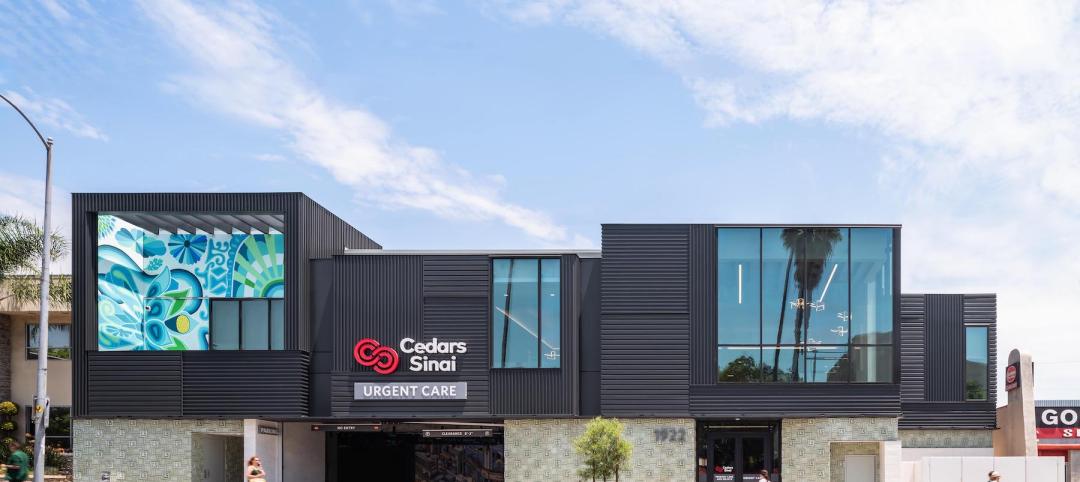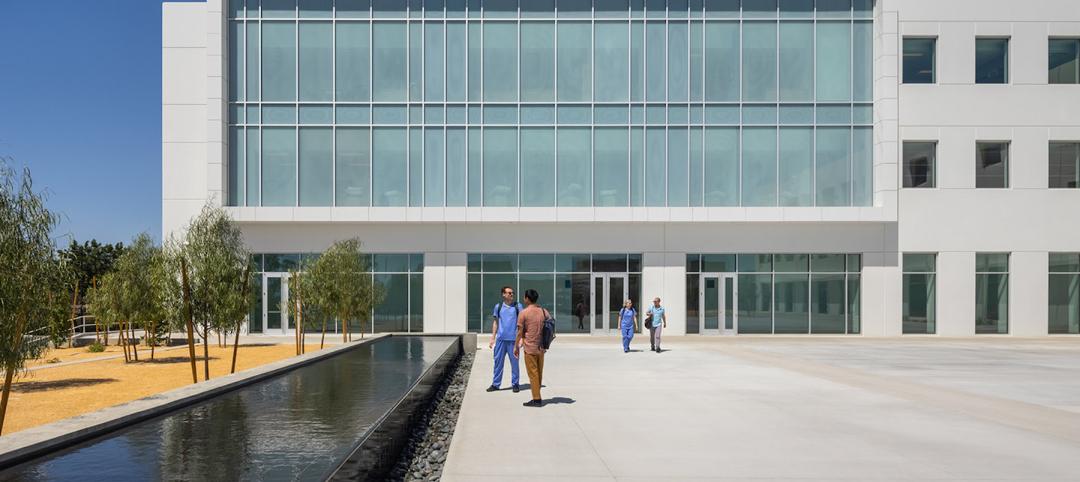Construction on UNC Health’s North Carolina Surgical Hospital, the largest addition to the Chapel Hill campus since it was built in 1952, was recently completed. The seven-story, 375,000-sf structure houses 26 operating rooms, four of which are hybrid size to accommodate additional equipment and technology for newly developed procedures. The addition also includes 59 pre- and post-operating rooms along with two floors of ICU space with 80 beds.
After considerable planning, the Surgical Tower was placed directly in front of the NC Memorial Hospital. This location provides patients and families easy access to surgical services and creates a more modern façade. The new tower is replacing aging facilities with larger and more efficient operating suites, as surgeries have grown more complex and require larger teams.
The building has a main reception area as well as visitor waiting areas on each floor, an indoor and outdoor staff lounge, employee locker rooms, offices, and conference rooms. Patient drop-off canopies now protect the entrances of both the surgical hospital and the children’s hospital next door from the elements. Two new overhead pedestrian bridges connect the existing campus parking decks to the UNC Adams School of Dentistry building and the new hospital. The Terrace Café, a new two-story building, provides much-needed respite for visitors and staff, and is located inside the existing courtyard space of Memorial Hospital. The project included renovations in the ambulatory patient care facility and a refreshed butterfly garden.
Prior to construction, site development work included extensive utility relocations, an upgraded storm and sanitary system, a new chilled water and steam system for the new hospital and adjacent buildings, and a new electrical duct bank from the hospital’s generator plant.
To expedite project delivery, multiple bid phases were employed including early site, early foundations, pedestrian bridge packages, and building packages.
Owner and/or developer: UNC HEALTH
Design architect: Page
Architect of record: Page
MEP engineer: Affiliated Engineers, Inc. (AEI)
Structural engineer: Stewart
General contractor/construction manager: Skanska USA Building
Related Stories
| Aug 16, 2022
Cedars-Sinai Urgent Care Clinic’s high design for urgent care
The new Cedars-Sinai Los Feliz Urgent Care Clinic in Los Angeles plays against type, offering a stylized design to what are typically mundane, utilitarian buildings.
| Aug 15, 2022
IF you build it, will they come? The problem of staff respite in healthcare facilities
Architects and designers have long argued for the value of respite spaces in healthcare facilities.
AEC Tech | Aug 8, 2022
The technology balancing act
As our world reopens from COVID isolation, we are entering back into undefined territory – a form of hybrid existence.
| Aug 3, 2022
Designing learning environments to support the future of equitable health care
While the shortage of rural health care practitioners was a concern before the COVID-19 pandemic, the public health crisis has highlighted the importance of health equity in the United States and the desperate need for practitioners help meet the needs of patients in vulnerable rural communities.
Healthcare Facilities | Aug 1, 2022
New Phoenix VA outpatient clinic is one of the largest veteran care facilities in the U.S.
The new Phoenix 32nd Street VA Clinic, spanning roughly 275,000 sf over 15 acres, is one of the largest veteran care facilities in the U.S.
Building Team | Jul 12, 2022
10 resource reduction measures for more efficient and sustainable biopharma facilities
Resource reduction measures are solutions that can lead to lifecycle energy and cost savings for a favorable return on investment while simultaneously improving resiliency and promoting health and wellness in your facility.
Healthcare Facilities | Jun 22, 2022
Arizona State University’s Health Futures Center: A new home for medical tech innovation
In Phoenix, the Arizona State University (ASU) has constructed its Health Futures Center—expanding the school’s impact as a research institution emphasizing medical technology acceleration and innovation, entrepreneurship, and healthcare education.
Healthcare Facilities | Jun 20, 2022
Is telehealth finally mainstream?
After more than a century of development, telehealth has become a standard alternative for many types of care.
Codes and Standards | Jun 14, 2022
Hospitals’ fossil fuel use trending downward, but electricity use isn’t declining as much
The 2021 Hospital Energy and Water Benchmarking Survey by Grumman|Butkus Associates found that U.S. hospitals’ use of fossil fuels is declining since the inception of the annual survey 25 years ago, but electricity use is dipping more slowly.
Healthcare Facilities | Jun 13, 2022
University of Kansas Health System cancer care floors foster community and empathy
On three floors of Cambridge Tower A at The University of Kansas Health System in Kansas City, patients being treated for blood cancers have a dedicated space that not only keeps them safe during immune system comprising treatments, but also provide feelings of comfort and compassion.

















